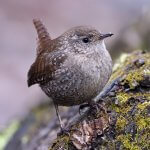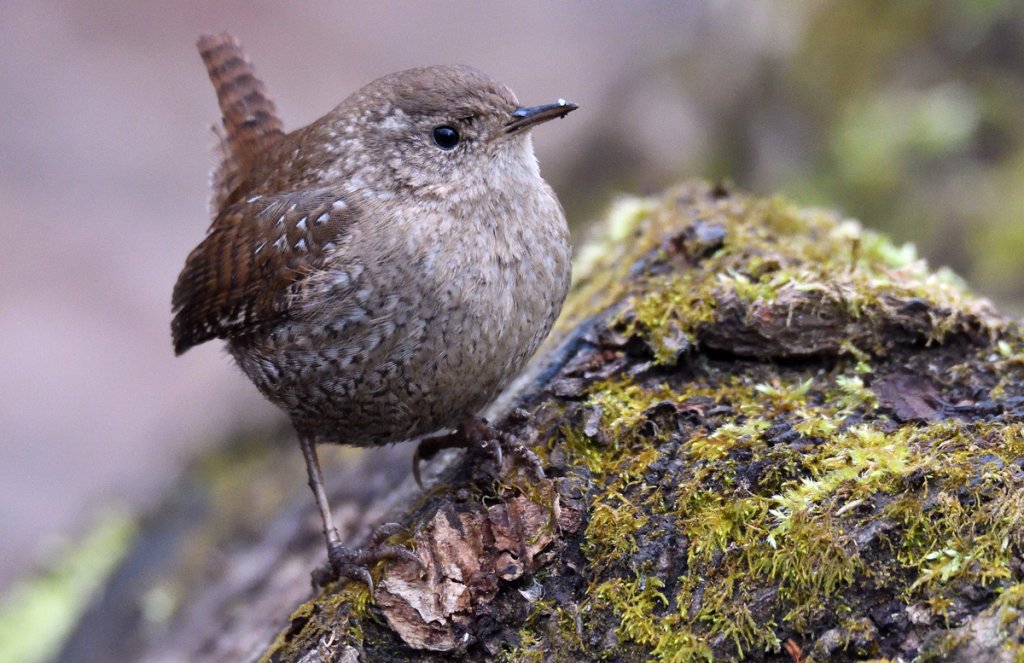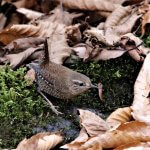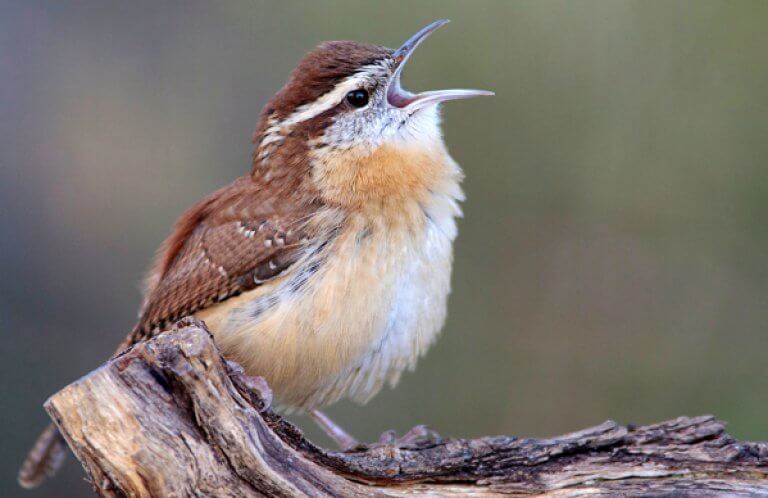About
One of the smallest wrens in North America, the inconspicuous Winter Wren is easy to mistake for a mouse as it creeps about its favored forest and riparian habitats. Patient observers will eventually catch sight of a tiny brown ball of a bird with barred flanks, a pale “eyebrow,” and a stubby, erect tail. This wren always seems to be in motion, flicking its wings and bouncing up down even while standing still. Its short, rounded wings make it a weak flyer, and it prefers to scamper about on foot.
Once lumped with a group of similar-looking wrens, the Winter Wren was part of a three-species split in 2010 based on updated genetic evidence. The other two species created from that split were the Pacific Wren of western North America and the Eurasian Wren, the only wren species found in the Old World. The other 95 species in the wren family (Troglodytidae) are distributed widely throughout the New World, and include familiar species such as the Carolina, House, and Cactus Wrens.
Tiny Bird, Big Sound
The Winter Wren is probably best known for its beautiful, high-pitched, and complex song, described by naturalist John Burroughs as a “vibrating tongue of silver.” Another famous naturalist, Arthur Cleveland Bent, described its song as “copious, rapid, prolonged and penetrating, having a great variety of the sweetest tones, and uttered in a rising and falling or finely undulating melody.”
The Winter Wren's entire body vibrates as it sings; ounce for ounce, its voice is ten times more powerful than a crowing rooster's!
Songs and Sounds
The Winter Wren's remarkable song is a rich, rapid cascade of vibrant notes, extraordinarily loud for the bird's size. Its call note is a short, two-part “kip-kip.”
Listen to the Winter Wren's beautiful song here:
Call note:
Breeding and Feeding
A male Winter Wren will usually return to its former breeding territory each nesting season. Once arrived, a male uses song to stake out and defend his territory from rivals. He builds multiple nests – as many as 12, but averaging six — throughout his enclave to attract a mate. The male will lead a visiting female around to show her each nest; if she opts to stay and breed in his territory, she decides which nest to use, finishing it with a lining of soft feathers and hair. Males with prime territories can be polygamous (have multiple mates nesting within its territory).

Winter Wren nest sites are cleverly concealed, sometimes in a simple cavity, but usually built in the root ball of a fallen tree or under a streamside overhang. The nest itself is a bulky, domed structure made of twigs and moss with a softer lining. The female lays a clutch of 5-7 eggs, which she incubates herself for about two weeks. After the young hatch both parents feed the nestlings, which fledge in another 19 days. Young Winter Wrens remain close to their nest area after fledging, and are fed by both parents for several more weeks.
Systematic Searcher
The Winter Wren feeds by systematically gleaning its way along the ground, probing fallen logs, root balls, and dense groundcover for prey. Its small size allows it to forage in places where larger forest birds, such as the Wood Thrush, Ovenbird, and Louisiana Waterthrush, cannot reach.
This tiny wren takes a wide variety of invertebrate prey, including insects and their larvae, millipedes, and spiders. In riparian areas, it feeds upon aquatic invertebrates, tadpoles, small fish, and their young. It will also feed upon small berries and seeds.
Region and Range

A short-distance migrant, the Winter Wren breeds in the northeastern United States and much of southern Canada, and winters in the southeastern United States. It migrates at night.
Some populations of Winter Wren are resident, and in those, the males defend territories year-round.
Conservation

Help support ABC's conservation mission!
The Winter Wren is vulnerable to habitat loss, particularly the loss of mature forests with thick undergrowth, and forest fragmentation. During migration, it often falls victim to outdoor cats and collisions with tall buildings and communications towers.
ABC's BirdScapes approach to conservation — which stresses the protection of nesting and wintering habitats as well as migration stopover sites — benefits the Winter Wren and many other short- and long-distance migratory species. Our advocacy programs, including Cats Indoors and resources for tower operators, work to reduce or remove some of the obstacles faced by the charismatic Winter Wren.
Get Involved
Policies enacted by the U.S. Congress and federal agencies, such as the U.S. Fish and Wildlife Service, have a huge impact on migratory birds. You can help shape these rules for the better by telling lawmakers to prioritize birds, bird habitat, and bird-friendly measures. To get started, visit ABC's Action Center.
Living a bird-friendly life can have an immediate impact on migratory birds in the United States. Doing so can be as easy as adding native plants to your garden, avoiding pesticides, and keeping cats indoors. To learn more, visit our Bird-Friendly Life page.
American Bird Conservancy and our Migratory Bird Joint Venture partners have improved conservation management on more than 8.5 million acres of U.S. bird habitat — an area larger than the state of Maryland — over the last ten years. That's not all: With the help of international partners, we've established a network of more than 100 areas of priority bird habitat across the Americas, helping to ensure that birds' needs are met during all stages of their lifecycles. These are monumental undertakings, requiring the support of many, and you can help by making a gift today.























































